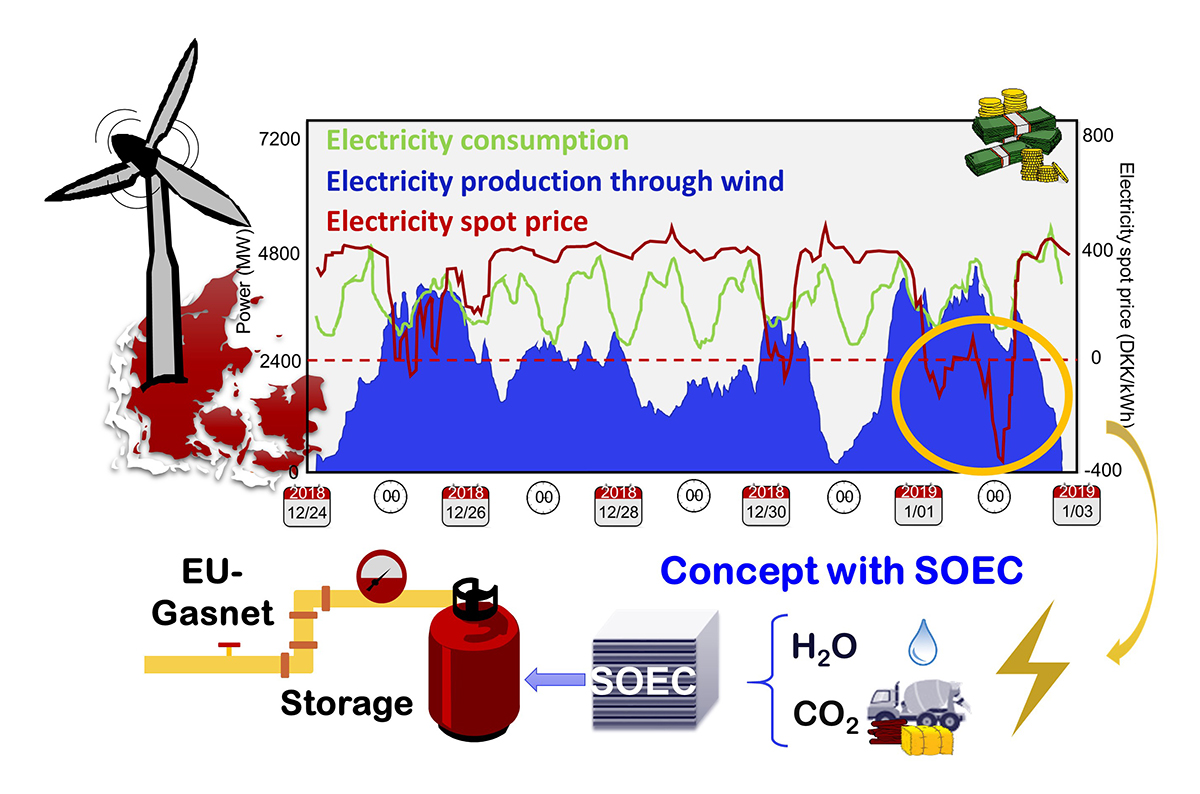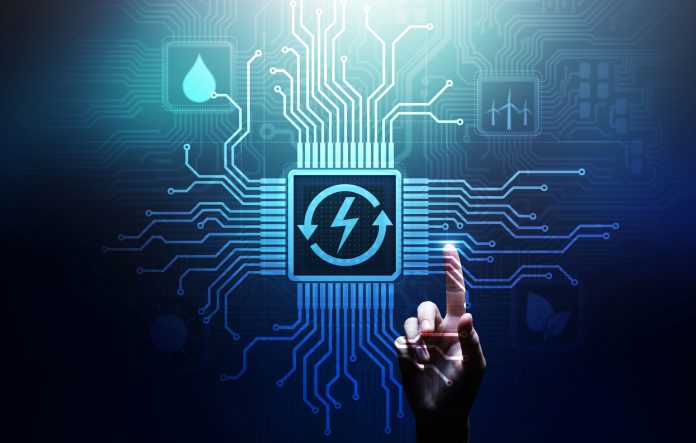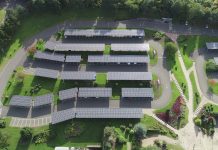Professor Anke Hagen discusses the flexible and efficient use of electricity from renewable sources to answer society’s needs at all times and sectors
It is an impressive view when sailing on the ferry between Denmark and Germany: the big wind farm close to Lolland with a capacity of almost 400 MW. It is only one location of the total installed ~5.x GW wind power in the country. Denmark sets one world record after the other when calculating the share of electricity production, which comes from wind. It was close to 50% in 2018. These numbers are a global snap shot of the transition from fossil-based energy supply to the future energy system based on renewable energy sources, which many countries are currently realising.
However, the devil is in the detail. When diving into the electricity production on a time scale not of a whole year, but in daily or hourly steps, the expected finding is that there is a huge fluctuation (see the figure for a period around Christmas and New Year 2018/2019 for Denmark). With increasing the installed wind capacity, the periods, where electricity production is smaller than the consumption are becoming fewer and shorter. On the other hand, there are more frequent periods, where the consumer needs are more than satisfied. The consequences are either to trade electricity for a cheap prise to neighbouring countries (see the varying spot price in the figure), to transport the produced electrons over larger and larger distances at high costs (and significant losses), to shut down the wind turbines (when the spot price becomes negative – see yellow circle in the figure) or to develop efficient, large scale storage technologies for electricity. The last option seems by far the most economic and sustainable to utilise renewable energy sources fully.
Electricity production is only one sector, waiting for a transformation into completely fossil-free systems. In addition, the transport sector is a major challenge, contributing with ca. ¼ to the total energy balance, and the chemical industry as well. Regarding transportation, electrification is one option for vehicles, but it is certainly not delivering for all processes (what about airplanes, container ships, etc.). These challenges ask for fossil-free solutions, preferentially using renewable energy sources and closing the carbon cycle.
After considering electricity and transport, even more sectors need attention. Many of the products essential for a modern, healthy human life contain carbon in different forms, such as medical products, information technology devices, textile goods, etc. Fossil sources provide the carbon feedstock at present. Fossil-free carbon sources involve biomass, recycling or direct CO2 use from industries such as cement industry or recovery from air. Future technologies aim at using renewable sources for both, the electricity and carbon, which in combination yield the needed products and services.
What are the technologies that can provide fossil-free solutions in all sectors of modern life? Clearly, not only one single technology will be able to solve all challenges, but a smart mix of many innovative technologies. It is the ambition of our research to contribute to such a mix. One powerful option in the energy sector is electrolysis, a well-known process, which can utilise electricity from renewable sources to split water into hydrogen and oxygen. The hydrogen may be used for energy production or as feedstock for chemical products. One of the electrolysis technologies- solid oxide electrolysis (SOE) – has an additional unique feature. It can also split CO2 into CO. CO in combination with hydrogen is the well-known synthesis gas, which is basis for the synthesis of many hydrocarbons through established catalytic processes (such as methanation – e-gas, methanol, ethanol, etc.). This approach is named power-to-X. Such hydrocarbons are efficient storage media for renewable energy, with existing infrastructure and logistics. They can also contribute to the transport sector or serve as feedstock for the chemical industry.

Furthermore, SOE can run in reverse mode and the same core unit, the stack, can thus produce electricity through the fuel cell mode operation (solid oxide fuel cell, SOFC). Both modes achieve extremely high efficiencies (SOE: close to 100%, SOFC: ca. 60% and higher). These features make SOE an attractive, flexible opportunity in all kind of energy scenarios. Currently, national and European funding bodies devote significant efforts to developing SOE (and SOFC).
One of the European funded projects is ECo (Efficient Co-Electrolyser for Efficient Renewable Energy Storage, grant number: 699892). This recently completed project, combined all parts of the value chain, from CO2 suppliers (cement industry, biogas provider) via research units specialised in the core technology, the SOE and industrial SOEC technology providers, to the potential customer (gas utility). The overall objective was to utilise steam and CO2 with electricity from renewable sources in an SOE, thereby producing synthesis gas, which in turn is converted to synthetic natural gas and added to the existing natural gas infrastructure for large scale and efficient storage and distribution of “green electricity”. The SOE technology was proven to operate on a dynamic electricity input corresponding to a real wind turbine profile. When the SOE operates at elevated pressure, even internal methane formation occurs, which reduces the need of the downstream catalytic unit. The electricity input is the major factor for the SOE system. The cheaper the available electricity, the higher the economic potential. The more “green electricity” is available in the specific grid mix, the higher is the potential for reduction of CO2 emissions.
European players hold strong positions in R&D of the SOE technologies. The ECo project is one of a number of European and national funded projects, which all aim at maturing the SOE technology in combination with electricity from renewable sources in order to contribute to realising the transformation to fossil-free societies and to create economic benefits in Europe.
Prof. Dr. Anke Hagen
Professor
DTU Energy
Tel: +45 46775884
Please note: This is a commercial profile











